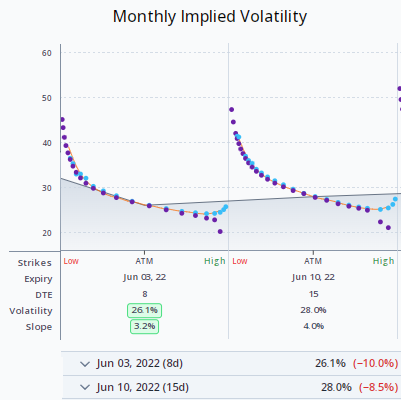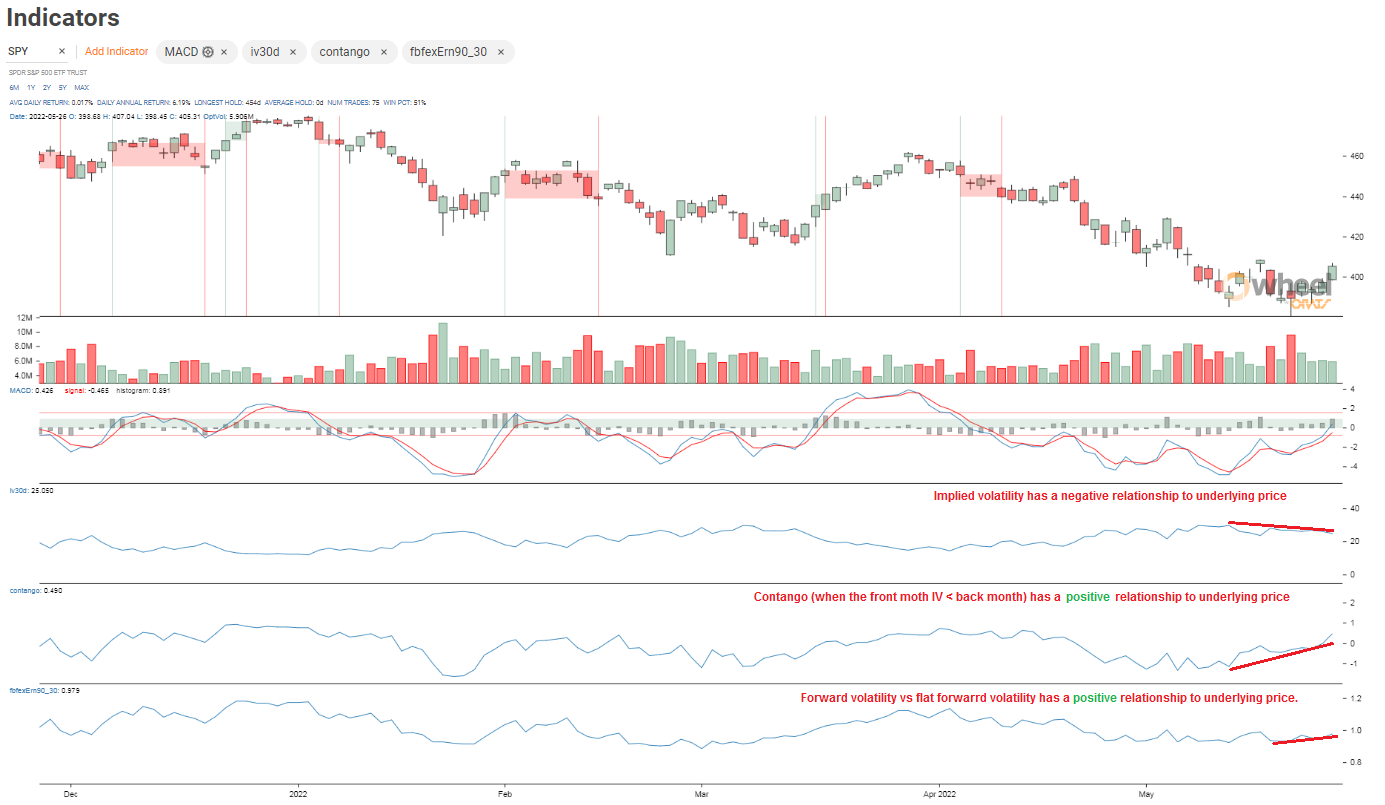Indicators
Monday, February 25th 2019
Our Most Popular IV is Constant Maturity Implied Volatility. How we calculate it.
How ORATS calculates our popular interpolated implied volatility reading. It is also called a constant maturity implied volatility and we show it both with and without earnings effects taken out.
Summary
ORATS calculates its most popular IV point, the interpolated implied volatility reading, by taking a weighted average of the two at-the-money implied volatilities of the two expirations around the constant maturity days. They show 10, 20, 30, 60, 90, 180, and 365 calendar day interpolations both with and without earnings effects taken out. The formula uses the 50 delta implied volatility less the earnings effect of the month weighted to find the interpolated implied volatility.
ORATS most popular IV data point is our interpolated implied volatility reading. It is also called a constant maturity implied volatility. We show 10, 20, 30, 60, 90, 180 and 365 calendar day interpolations both with and without earnings effects taken out.
We calculate these by finding the two expirations around the constant maturity days and taking a weighted average of the two at the money implied volatilities.
Let's take an example of the 60 day ex-earnings interpolated implied volatility = 55.5% for TSLA on 1/4/2019.

The 2/22/2019 expiration has 50 days and 3/15/2019 has 71 days to expiration.
We use square roots of time so the total difference from the sqrt of 60 days or 7.7 is 1.35 = Abs(60days ^ 0.5 - 51days ^ 0.5) + Abs(60days ^ 0.5 - 71days ^ 0.5)
We use the 50 delta implied volatility less the earnings effect for the month weighted to find the 60 day ex-earn implied.
55.5 = (1.35 - Abs(60days ^ 0.5 - 51days ^ 0.5)) / 1.35 * (59.4 - 4.3) + Abs(60days ^ 0.5 - 51days ^ 0.5) / 1.35 * (58.9 - 2.9)
Note that if there was not an earnings effect for a month, the formula would use the 50 delta implied volatility less the earnings effect of zero. Here's how we remove earnings from implied volatility.
Still have questions on how interpolated implied volatility works? Here's a video to help explain this further:
Disclaimer:
The opinions and ideas presented herein are for informational and educational purposes only and should not be construed to represent trading or investment advice tailored to your investment objectives. You should not rely solely on any content herein and we strongly encourage you to discuss any trades or investments with your broker or investment adviser, prior to execution. None of the information contained herein constitutes a recommendation that any particular security, portfolio, transaction, or investment strategy is suitable for any specific person. Option trading and investing involves risk and is not suitable for all investors.
All opinions are based upon information and systems considered reliable, but we do not warrant the completeness or accuracy, and such information should not be relied upon as such. We are under no obligation to update or correct any information herein. All statements and opinions are subject to change without notice.
Past performance is not indicative of future results. We do not, will not and cannot guarantee any specific outcome or profit. All traders and investors must be aware of the real risk of loss in following any strategy or investment discussed herein.
Owners, employees, directors, shareholders, officers, agents or representatives of ORATS may have interests or positions in securities of any company profiled herein. Specifically, such individuals or entities may buy or sell positions, and may or may not follow the information provided herein. Some or all of the positions may have been acquired prior to the publication of such information, and such positions may increase or decrease at any time. Any opinions expressed and/or information are statements of judgment as of the date of publication only.
Day trading, short term trading, options trading, and futures trading are extremely risky undertakings. They generally are not appropriate for someone with limited capital, little or no trading experience, and/ or a low tolerance for risk. Never execute a trade unless you can afford to and are prepared to lose your entire investment. In addition, certain trades may result in a loss greater than your entire investment. Always perform your own due diligence and, as appropriate, make informed decisions with the help of a licensed financial professional.
Commissions, fees and other costs associated with investing or trading may vary from broker to broker. All investors and traders are advised to speak with their stock broker or investment adviser about these costs. Be aware that certain trades that may be profitable for some may not be profitable for others, after taking into account these costs. In certain markets, investors and traders may not always be able to buy or sell a position at the price discussed, and consequently not be able to take advantage of certain trades discussed herein.
Be sure to read the OCCs Characteristics and Risks of Standardized Options to learn more about options trading.
Related Posts



